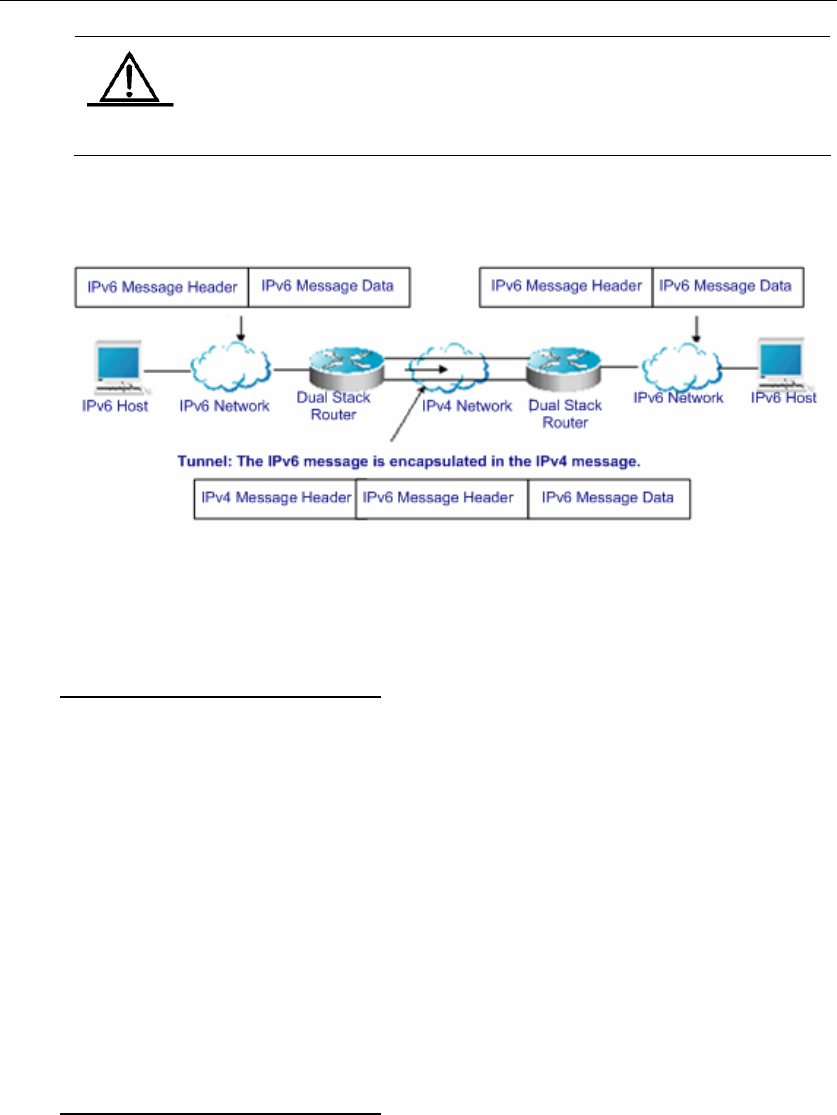
DES-7200 Configuration Guide Chapter 3 IPv6 Tunnel Configuration
3-2
Caution
Interconnecting the isolated IPv6 networks through the IPv6 tunnel technology
is not the ultimate IPv6 network architecture. Instead, it is a transitional
technology.
The model using the tunnel technology is shown in the following figure:
The features of various tunnels are respectively introduced below.
3.1.1 Manually Configured
IPv6 Tunnel
One manually configured tunnel is similar to one permanent link set up between two
IPv6 domains via the backbone network of the IPv4. It is applicable for the relatively
fixed connections that have a higher demand on security between two Area Border
Routers or between an Area Border Router and a host.
On a tunnel interface, you must manually configure the IPv6 address, source IPv4
address (tunnel source) and destination IPv4 address (tunnel destination) of the tunnel.
The nodes at the two end of the tunnel must support the IPv6 and IPv4 protocol stacks.
In practical application, tunnels are always manually configured in pairs. You can think
it as a point-to-point tunnel.
3.1.2 ISATAP Automatic
unnel
Intra-site Automatic Tunnel Addressing Protocol (ISATAP) is a type of IPv6 tunnel
technology by which an intra-site IPv6 architecture takes an IPv4 network as one
nonbroadcast multi-access (NBMA) link layer, namely taking an IPv4 network as the
virtual link layer of the IPv6.
ISATAP is applicable for the case where the pure IPv6 network inside a site is not
ready for use yet and an IPv6 message need be transferred internally in the site. For
example, a few of IPv6 hosts for test need communicate one another inside the site.


















